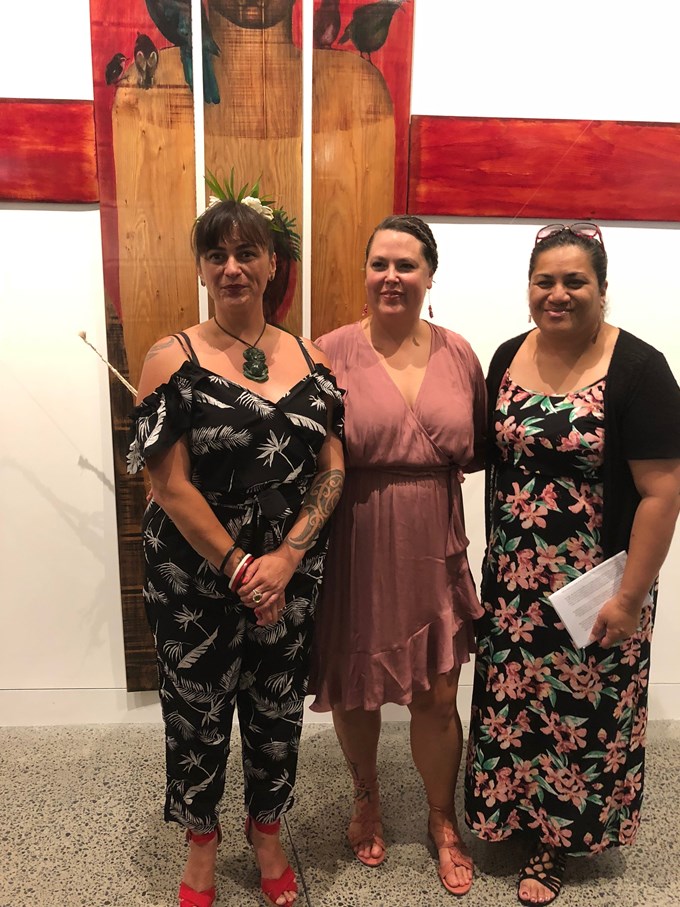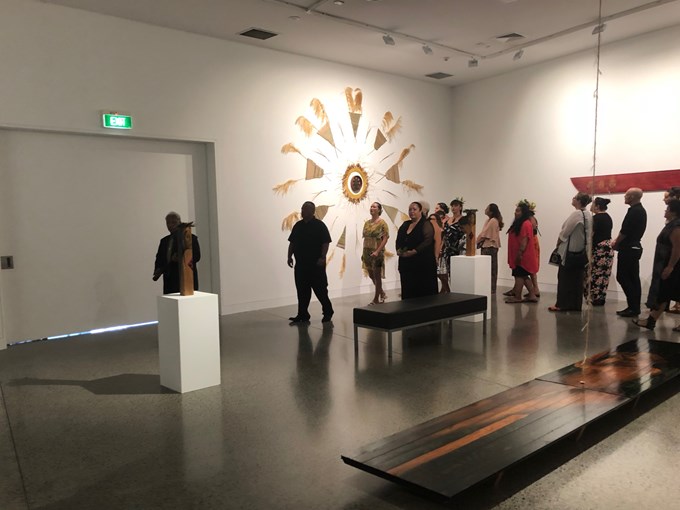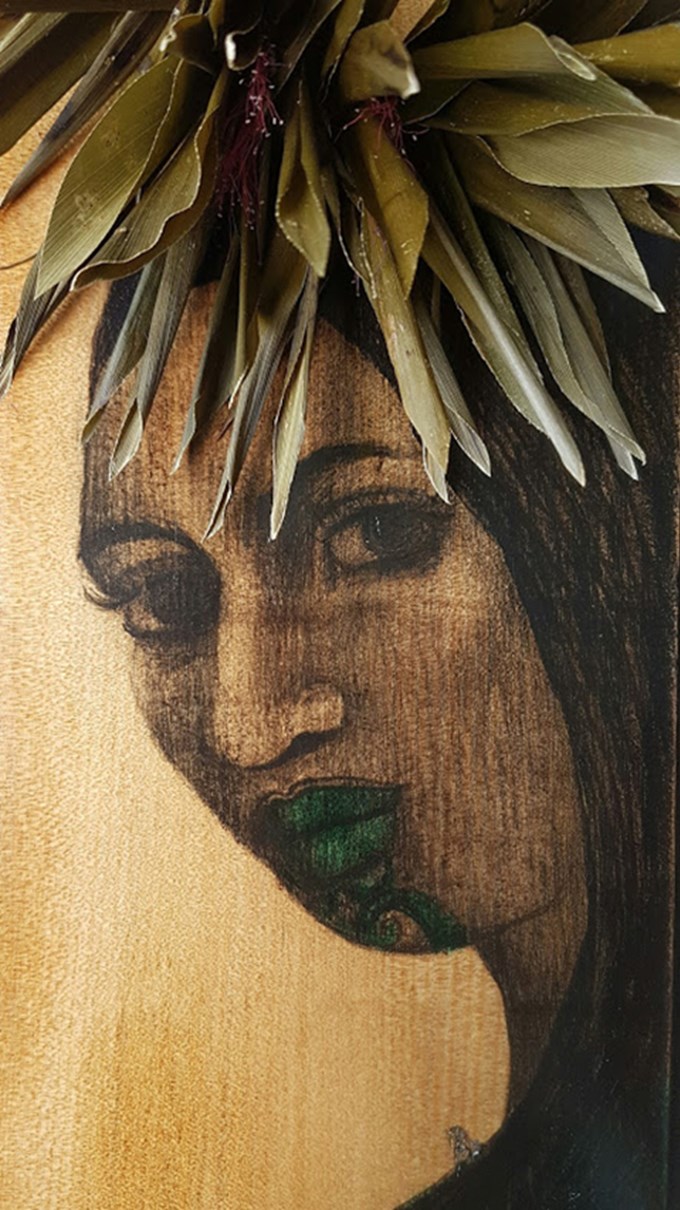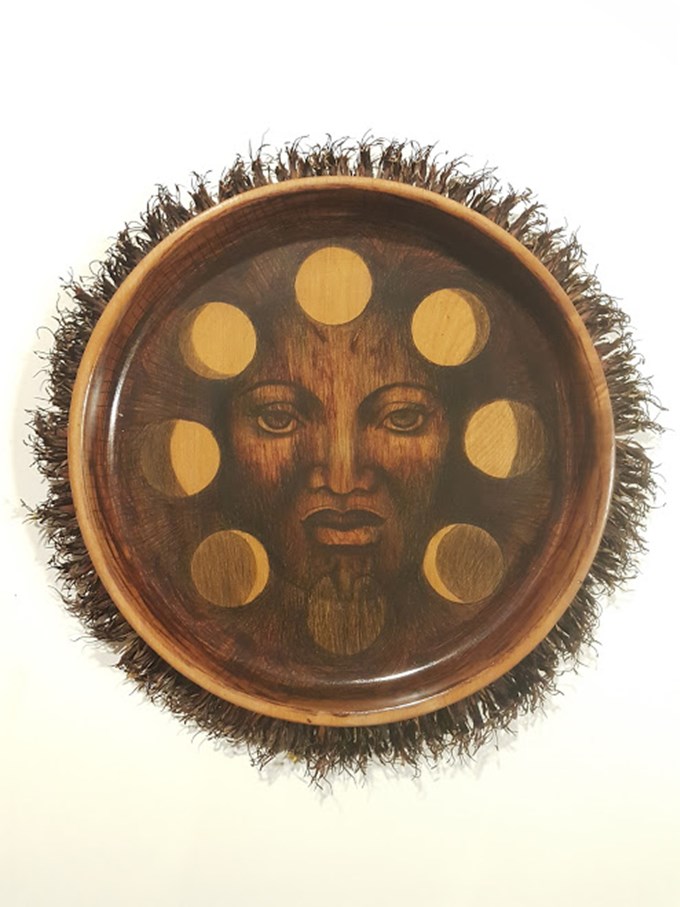A new exhibition celebrating the contribution women have made down through history, both in the Māori world and in the fight for political justice, has opened in Māngere.
Te Kōpū will be on display at the Māngere Arts Centre Ngā Tohu o Uenuku till 3 March.
The artworks are a collaborative project between Natasha Te Arahori Keating and Bethany Matai Edmunds and has been developed over two years.
Hanna Scott, Auckland Council's Senior Programme Leader for Arts, Community and Events, says the exhibition is part of a wider theme of acknowledging when women got the right to vote in New Zealand.
“The work focusses on atua wāhine or Māori goddesses, female ancestry, feminine knowledge and its healing potential,” she says.
“The exhibition sets the tone for a year-long series of exhibitions made by women of Māori and Pacific descent in recognition of 2018 being the 125th anniversary of Women's Suffrage in Aotearoa.”
Carrying on the legacy
In her speech at the pōwhiri, Māngere-Ōtāhuhu Local Board chair Lemauga Lydia Sosene says it was great to have such a historically important achievement acknowledged in this way in the heart of Māngere.
"New Zealand is known across the world for the Women’s Suffrage movement and had it not been for that long historical record, people like myself would not be able to do our work today," she says.
“The Māngere Arts Centre is the platform to launch our people’s aspirations and so we thank you for using the Centre to show your work.”
The artists Natasha Te Arahori Keating and Bethany Matai Edmunds say it’s been a real privilege to put on this exhibition given it’s part of a wider celebration of Women’s Suffrage.
“We acknowledge those wāhine (women), all those years ago who stood strong as women in their place to assert their rights to vote and that they were equal citizens within Aotearoa,” says Bethany.
“And what we’re doing is claiming our space as wāhine in this urban melting pot of Tāmaki Makaurau and the wider world in 2018. And to show that we continue to stand strong in our place as wāhine Māori.”
Artists to create a safe place
Natasha, who is of Ngāti Tūwharetoa and Ngāi Tūhoe descent, hopes people are moved by the pieces, which include woven and painted works using materials found in the bush and the urban environment.
“It's about trying to create a safe place by using our [Māori] goddesses to create this safe place,” she says.
Bethany, who’s of Ngāti Kuri descent from the Far North, says the exhibition may also challenge some viewers.
“We’re creating a space for us to reflect on where we come from as wāhine in 2018 and the legacy that we’ve inherited. The known narrative about our creation stories and the published writings that we refer to are often written by non-Maori males so it’s [also] about challenging that from a Māori women’s perspective.”
You can see Te Kōpū at the Māngere Arts Centre Ngā Tohu o Uenuku till 3 March.





